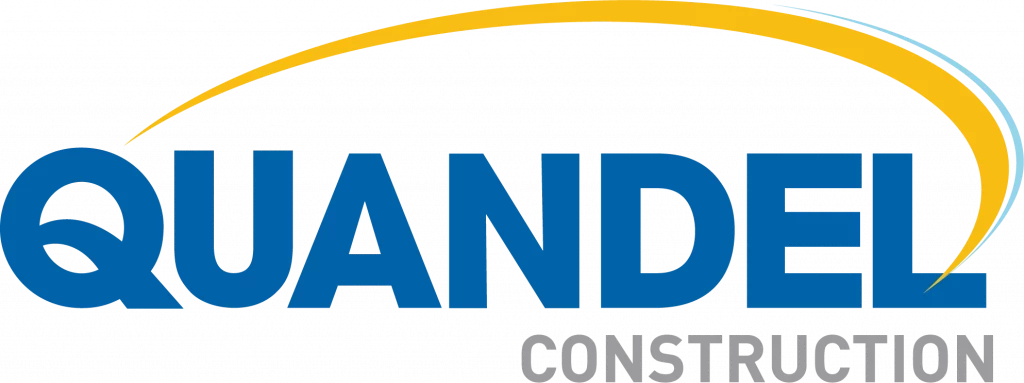Inflation and rising interest rates are starting to take their toll on some construction sectors, but one sector continues to be strong with no signs of slowing – multifamily housing construction.
The July housing report showed starts of multifamily structures with five or more units were 16.4% higher than at the same time in 2021.
U.S. Department of Housing and Urban Development
Several factors are driving that demand. Some people cannot afford to buy a home, particularly at current mortgage rates. Much of the nation’s multifamily housing is aging and needs to be replaced or renovated. And Pennsylvania’s aging population is looking for smaller spaces without maintenance responsibilities or property tax bills.
The market for senior apartments is “very active,” said Joe Chicora, senior project manager/project executive at Quandel Construction Group in Harrisburg.
Quandel had five senior housing facilities in progress in late August. They typically are 30 to 50 units and are funded through the Pennsylvania Housing Finance Agency.
Price competition
Market rate and affordable multifamily projects also are in demand.
“The reality is that the demand for affordable housing greatly outpaces the supply in this country,” said Rebecca Warntz, vice president of design and construction at Enterprise Community Development, a nonprofit developer and operator of affordable and mixed-income housing in the mid-Atlantic region.
Demand for multifamily housing started increasing about a decade ago in the Baltimore and Washington, D.C. markets, and in the last few years, that demand has also been increasing in suburban and rural markets including those in Pennsylvania, Warntz said.
“Stable and secure housing is essential for people to focus on their goals like career aspirations and education as well as their physical and mental health. Developing more multifamily housing is truly necessary to building thriving communities,” she said.
With such a tremendous need, more contractors have become interested in multifamily construction.
“We have seen builders over the last several years moving into the multifamily market who didn’t operate there before,” Warntz said.
With the cost and availability of labor and materials still volatile, preconstruction is becoming even more critical for Enterprise Community Development.
“It’s important for our contractors to provide us with well-developed material purchasing schedules that begin six months or more before the anticipated start of construction,” Warntz said.
Enterprise Community Development is selecting contractors early, so those contractors can line up their subcontractors to ensure labor is available when projects are ready to start.
Financial hurdles
“The current combination of increased interest rates and increasing construction costs is creating greater funding gaps in our projects, making it more challenging to get to financial closing, which in turn is delaying construction starts,” Warntz said. “However, we still have a very robust backlog, and we continue working with our public and private partners to move those projects forward with the focus of continuing to increase and preserve the affordable housing supply.”
Renovating the glut of unused office space could be an emerging market for multifamily construction, Chicora said.
“You look at all the office space that’s on the market now because everybody’s working at home. I’ve seen a couple already that have been converted into housing and I wouldn’t be surprised that if they can’t start leasing or renting out these spaces, they’ll convert them,” he said.
“It’s just a matter of time until it kicks in because all of these developers that own these office buildings, they’re half empty or three-quarters empty, and it doesn’t pay to keep them open with the tenants that they do have because the buildings aren’t full.”
Converting office space into apartments or condominiums is easy on the upper floors, but the ground floor requires substantial renovating to break up concrete floors to install plumbing, Chicora said.
Renovations in multifamily housing
Renovation of outdated multifamily housing also is a busy market, Warntz said.
Enterprise Community Development has about 660 new units in construction or preconstruction and about 1,100 existing units undergoing renovations. Additional projects are in the conceptual stage.
Renovation projects include modernizing high-rises that were built in the 1960s and 1970s to replace major systems, install fire sprinklers, introduce fresh air and improve energy efficiency.
“Those are large, complex projects, and we’re going to continue seeing more of them as the existing multifamily housing stock continues to age,” Warntz said.
Sustainability

Enterprise, which has a portfolio of 112 properties and 12,500 housing units in Pennsylvania, Maryland, Virginia and Washington, D.C., has long-been committed to building its projects in sustainable fashion.
“Enterprise committed to building sustainable, energy-efficient homes long before it was mandated or mainstream,” Warntz said. “In the early 2000s, Enterprise developed the Green Communities Criteria. It was the first green building standard for homes to be implemented nationally. It is still among the most stringent and comprehensive sustainable standards. It goes well beyond addressing the basics of things like energy efficiency, water conservation and air quality because it also places an emphasis on the health and resilience of our residents and includes some criteria similar to WELL [Building].”
“At a bare minimum, all of our new construction projects are Energy Star certified and Enterprise Green Communities certified, and we are often Zero Energy Ready certified as well,” she said. “We do also have experience delivering LEED silver and gold certified properties. But energy efficiency and durability are top of mind for us when we’re designing our projects so that our properties are cost effective to maintain and operate, and also so that our residents aren’t being overtaxed by high utility bills.”
Check out other articles in the Fall 2022 issue of The Keystone Contractor!







